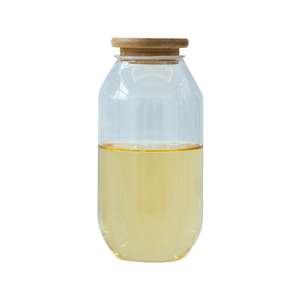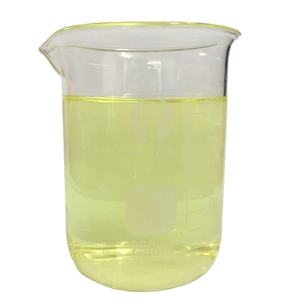Penetrating Seal Curing Agents: Enhancing Concrete Durability and Longevity in Modern Construction cement waterproofing additive
Intro to Permeating Seal Curing Agents: An Important Technology in Concrete Protection
Permeating seal healing representatives (PSCAs) have actually emerged as a transformative option in concrete modern technology, providing dual benefits of surface sealing and internal hydration improvement. Unlike standard membrane-forming curing compounds, PSCAs permeate deep right into the concrete matrix, responding chemically with totally free lime and various other by-products to create insoluble crystalline frameworks. This response not just seals micro-cracks and capillary pores but likewise improves compressive toughness and lasting sturdiness. As facilities needs expand for more resistant and lasting materials, PSCAs are playing an increasingly important function in prolonging the service life of concrete frameworks.
(Penetrating Seal Curing Agents)
Chemical Structure and Working Mechanism
Passing through seal treating representatives are normally composed of silicates– most commonly lithium, sodium, or potassium silicates– in addition to reactive drivers and surfactants that improve infiltration depth and chemical sensitivity. Upon application, these agents infiltrate the permeable structure of fresh or hard concrete and react with calcium hydroxide, a byproduct of cement hydration, to create calcium silicate hydrate (C-S-H) gel and insoluble crystalline precipitates. These developments properly obstruct water access, chloride ion penetration, and carbonation, which are primary sources of concrete degradation. The self-sealing ability of PSCAs makes them especially valuable in hostile atmospheres such as marine frameworks, wastewater therapy plants, and bridge decks.
Benefits Over Conventional Healing Techniques
Typical treating approaches, including damp burlap, ponding, and membrane-forming compounds, typically drop short in regards to efficiency, labor intensity, and environmental influence. On the other hand, penetrating seal curing agents offer an extra efficient, durable, and eco-friendly option. They do not evaporate or weaken over time, removing the need for repeated applications. Additionally, because they chemically bond with the concrete substratum, PSCAs supply long-term defense without modifying surface visual appeals or slide resistance. Their use likewise adds to energy financial savings by reducing the need for repair and maintenance, thus reducing the lifecycle cost of concrete structures.
Application Throughout Framework and Commercial Sectors
The adaptability of penetrating seal healing agents has brought about their fostering across a wide range of building and construction applications. In framework tasks such as highways, airport terminals, and tunnels, PSCAs help shield versus freeze-thaw damages, deicing chemicals, and abrasion. In commercial floor covering, they enhance dust-proofing and wear resistance, boosting interior air high quality and decreasing maintenance downtime. Residential and commercial structures benefit from boosted wetness resistance in foundations, basements, and parking garages. Furthermore, their compatibility with different types of concrete– consisting of environment-friendly concrete with high fly ash or slag content– makes them a favored option for sustainable building practices intending to reduce symbolized carbon.
Market Patterns and Technological Advancement
The international market for passing through seal healing representatives is increasing due to rising need for high-performance building and construction materials and more stringent regulative standards on structure toughness and sustainability. Makers are purchasing R&D to develop next-generation PSCAs with boosted penetration deepness, faster response kinetics, and lowered application times. Innovations consist of crossbreed formulas that incorporate silicate-based chemistry with nano-silica or polymer-modified systems, using remarkable efficiency in extreme problems. In addition, clever distribution systems such as fogging and low-pressure spray innovations are being adopted to make certain consistent protection and optimal product utilization. Digital tools like wetness sensing units and predictive analytics are additionally being incorporated to monitor treating performance in real-time.
Environmental Impact and Sustainability Considerations
Penetrating seal curing agents are typically considered environmentally benign contrasted to solvent-based sealants and traditional healing membranes. The majority of solutions are water-based, non-flammable, and emit minimal unpredictable organic substances (VOCs). Nonetheless, worries remain concerning the sourcing of basic materials and the possibility for alkalinity-related results during manufacturing. To address these issues, researchers are exploring bio-based activators, recycled silicate sources, and low-carbon synthesis courses. Moreover, the extensive service life of treated concrete decreases the regularity of demolition and restoration, lining up with circular economic climate principles and contributing to general carbon decrease in the built atmosphere.
Future Expectation: Smart Products and Integrated Solutions
( Penetrating Seal Curing Agents)
Looking in advance, the advancement of passing through seal curing agents will certainly be driven by advancements in nanotechnology, smart materials, and digital combination. The growth of receptive PSCAs that can adapt to altering environmental conditions– such as humidity-triggered activation or self-healing habits– could reinvent concrete upkeep methods. Integration with Building Information Modeling (BIM) and Internet of Points (IoT)-enabled tracking systems will enable data-driven decisions on material efficiency and upkeep organizing. As cities deal with raising climate pressures and maturing framework, the adoption of advanced healing modern technologies like PSCAs will be crucial in ensuring architectural strength and longevity for future generations.
Vendor
TRUNNANO is a supplier of boron nitride with over 12 years of experience in nano-building energy conservation and nanotechnology development. It accepts payment via Credit Card, T/T, West Union and Paypal. Trunnano will ship the goods to customers overseas through FedEx, DHL, by air, or by sea. If you want to know more about potassium silicate, please feel free to contact us and send an inquiry(sales5@nanotrun.com).
Tags: concrete addtives, Penetrating Seal Curing Agents, Lithium-Based Curing Agent Seal Concrete Agent
All articles and pictures are from the Internet. If there are any copyright issues, please contact us in time to delete.
Inquiry us

